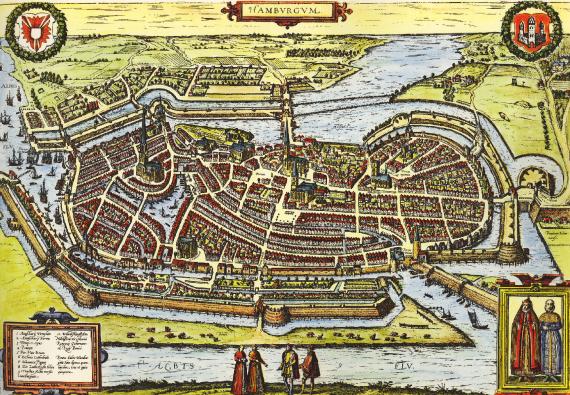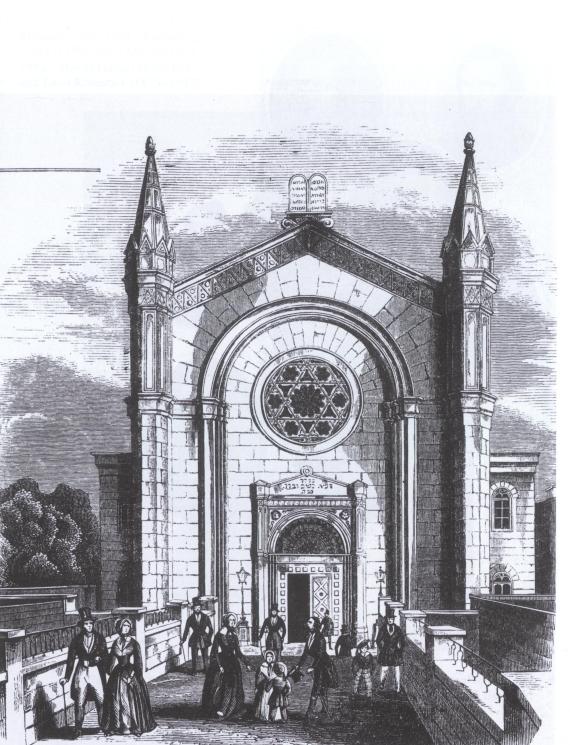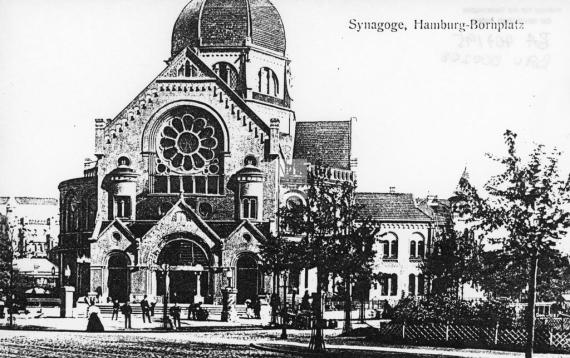The settlement of Jews in Hamburg only began in the early modern period around the year 1580 with the immigration of Sephards from Portugal. The immigrants were baptized as Catholics, but continued to practice the Jewish faith. Among them were merchants as well as bankers and jewelers, whose economic network contributed greatly to the foreign trade activities in the Hanseatic city. Because of this, they were often victims of anti-Semitic attacks. For their residence permit in the city, Jewish immigrants from Portugal had to pay large sums of money to the Hamburg Senate. Jewish practices such as circumcisions as well as worship gatherings remained forbidden. The small community had not established a Jewish cemetery in Altona until 1611. Before that, it had to bury its deceased in Christian burial grounds. It was not until 1663 that the German Jewish families in Ottensen established a small cemetery.
In the middle of the 17th century, the Sephardic community reached a number of 120 families , however, at this time members of the community emigrated again (for example, to Amsterdam) due to the payments for settlement in Hamburg, which became increasingly higher. Hamburg experienced a settlement of Ashkenazi Jews in this century, who briefly resided in the city and were expelled.
It was not until the "Reglement der Judenschaft in Hamburg so Portugiesisch als Hochdeutscher Nation" by the German Emperor that the community was able to develop until the National Socialism. The first synagogue was built by Ashkenazi Jews in 1654 at Neuer Steinweg, the second followed in 1860 in the Kohlhöfe. In total, there were six Ashkenazi communities during the 17th century, in Altona, Harburg, Wandsbek and Hamburg. The Sephardic community continuously strengthened economically and had become the upper class in society. In 1834 they built their own synagogue at the Alter Wall. When this was destroyed by a city fire, a new synagogue was built on Markusstraße in 1854-55. It was, apart from the Altona Synagogue, the only Sephardic synagogue on German soil.
The number of members of the Sephardic congregation dwindled over time and in 1925 it numbered only 150 adults. The Ashkenazi community, on the other hand, became larger and more significant for the city. In 1790, the community celebrated the opening of the synagogue on Elbe Street, which it used until 1906. In 1860, the synagogue at Kohlhöfe was inaugurated, until then the largest for the community, with 1,200 seats. Unlike the previous synagogues, which were hidden from the public eye, the new main synagogue in 1906 was located on Bornplatz, facing the street. This synagogue also seated 1,200 people. The synagogue on Bornplatz in the Grindelviertel was the heart and center of Jewish life in Hamburg until 1939.
In 1933, similar to other cities in Germany, there was a boycott of Jewish businesses under Nazi rule. Also the synagogue on Bornplatz was set on fire, as were many others, on November 9, 1938. The Sephardic synagogue in Hamburg, however, was spared in the Reichskristallnacht. From 1941 began the deportations of Jüdinnen*Juden to the occupied East and to Theresienstadt.
After the war Hamburg counted about 1,000 Jews, before the war there were 20,000 people. However, the Jewish community grew rapidly and was able to inaugurate a new synagogue as early as 1960. In Hamburg, several memorials and monuments commemorate the former Jewish community. In the streets of Hamburg there are more than 2,300 stumbling stones, which means that it has the most stones in Germany.



Add new comment